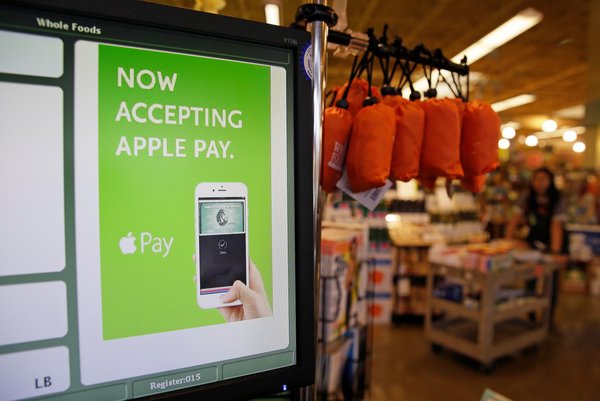For years, tech companies have dreamed of a future in which people ditch their wallets and pay for things with their smartphones. And for years, that has not happened.
But Apple (AAPL) may be on to something.
In the three weeks since the company released Apple Pay, its first stab at a mobile wallet, some major retailers are seeing a wave of consumers eager to check out at the register with their iPhones.
And even some of Apple’s competitors, like Google (GOOG) and Softcard, say Apple has helped create general awareness of mobile payments, including for their services.
Whole Foods (WFM), the high-end grocery chain, said it had processed more than 150,000 Apple Pay transactions. McDonald’s (MCD), which accepts Apple Pay at its 14,000 restaurants in the United States, said Apple Pay accounted for 50 percent of its tap-to-pay transactions. And Walgreens (WAG), the nationwide chain of drugstores, said its mobile wallet payments had doubled since Apple Pay came out.
?Apple Pay is still far from a dominant payment system. But the retailers’ numbers are the first faint signs of a mainstream willingness to stray from cash and cards. Apple, analysts say, has tapped into something.

Whole Foods, the grocery chain, said it had processed more than 150,000 Apple Pay transactions since the service started. CreditEric Risberg/Associated Press
“Quite frankly, a lot of it has to do with the strength of the Apple brand and how much merchants and customers love how easy the experience is,” said Denée Carrington, an analyst with Forrester Research. “I’m not saying it’s changing the landscape overnight. But this has never happened with other mobile wallets.”
Not all retailers are blown away just yet by early adoption of Apple Pay. Toys “R” Us, which supports Apple Pay in all of its 870 stores, said that although the number of mobile payments at its stores increased after the introduction of Apple Pay, there were still relatively few mobile payments because customers were still learning about the new technology.












Leave A Comment